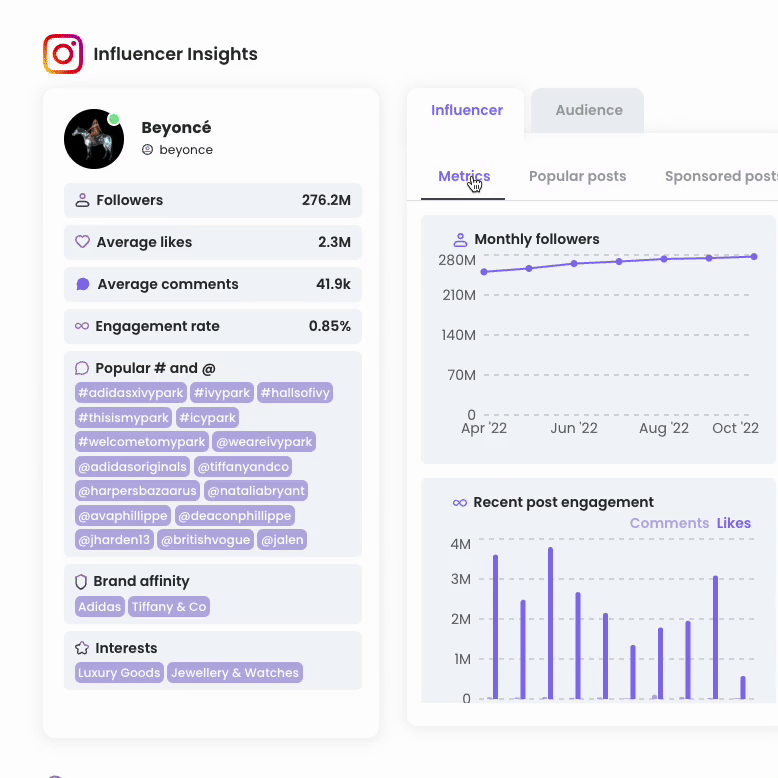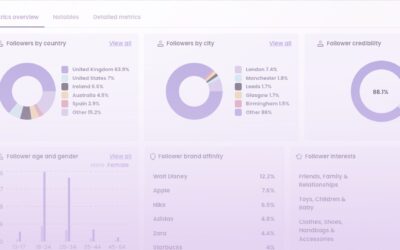The last step in any influencer marketing campaign should be measuring the results: that helps you to decide which influencers to use in your future campaigns and what the budget for your next campaign should be. Here’s your guide on how to measure influencer marketing!
P.S. Before you start, make sure you have Google Analytics installed – without it, it’s impossible to measure success of any marketing efforts.
Which metrics should you measure in your influencer marketing campaign?
The first thing you need to decide when planning an influencer marketing campaign is your goal. Based on your campaign goals, you can decide on which metrics to measure.
A mistake that many marketers tend to do is trying to hit all the goals with one influencer campaign. That can’t be done: if you’re trying to hit all the goals, you won’t hit any. Instead, choose 1-2 KPI-s (key performance indicators) and optimize your whole influencer marketing campaign based on these.
Another thing to keep in mind is the classic marketing psychology: if you’re just starting out with a new or unknown brand, you can’t expect sales right away. There are so many ads around us – that we don’t even notice them anymore.
People rarely do their purchase decisions the first time they hear about the product on social media. In fact, studies have shown that, on average, consumers need 7-8 touchpoints before they make a purchase decision! As a new brand, you need to build the foundation first: attention, interest, desire.
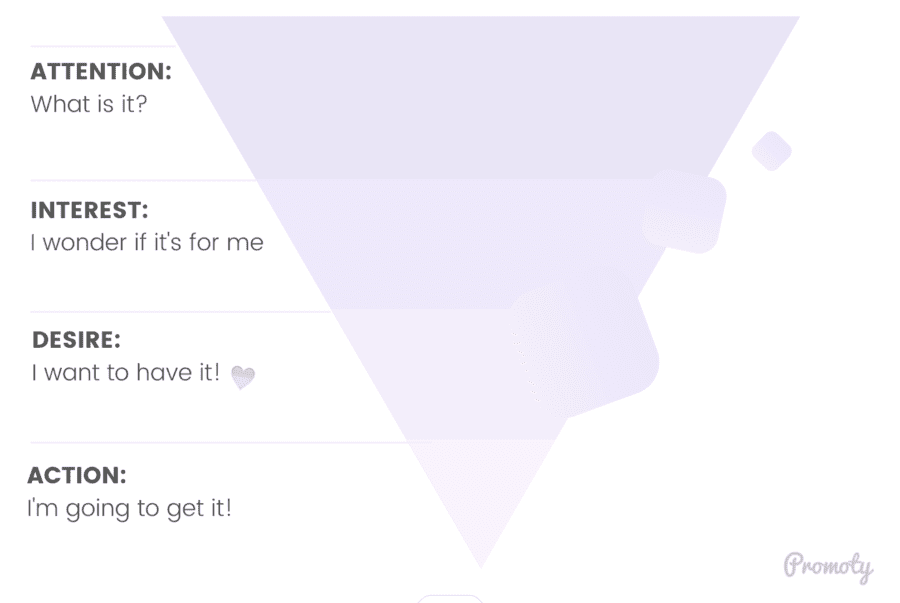
a) Measuring the impact on brand awareness
If your goal is to raise brand awareness, you should mostly focus on the metrics like social media reach, impressions, and views of Instagram Stories, Reels and TikTok videos. Additonally, you can track resulting activities, such as website visitors, and the number of branded searches on Google.
The good news is that if the influencer has a Business or Creator Account on Instagram, they can see the impressions and reach for each image separately. Thus, after the collaboration, they can take a screenshot of the actual results.
If you are using an influencer marketing platform, you’ll see the same data for every influencer’s post and story separately as well as for the whole influencer marketing campaign in total.
Marketing is one of the most important aspects of your business, if you ever need further assistance Toptal’s Marketing Services empowers businesses with world-class marketing talent to solve their most challenging problems. From building brands to launching new products and services to growing the company’s customer base.
Measuring reach within your target audience
In addition to the total reach, you probably want to measure reach within your target audience. After all, the main goal of your influencer marketing program is reaching your target audience!
For this reason, you want to use an influencer analytics tool (such as Promoty) to make sure that the selected influencers’ followers’ distribution by location, age, and gender. This way, you can easily find influencers whose audience matches with your target group.
(Checking influencers’ profile insights is especially important as fake followers have become a significant problem in the influencer marketing industry.)
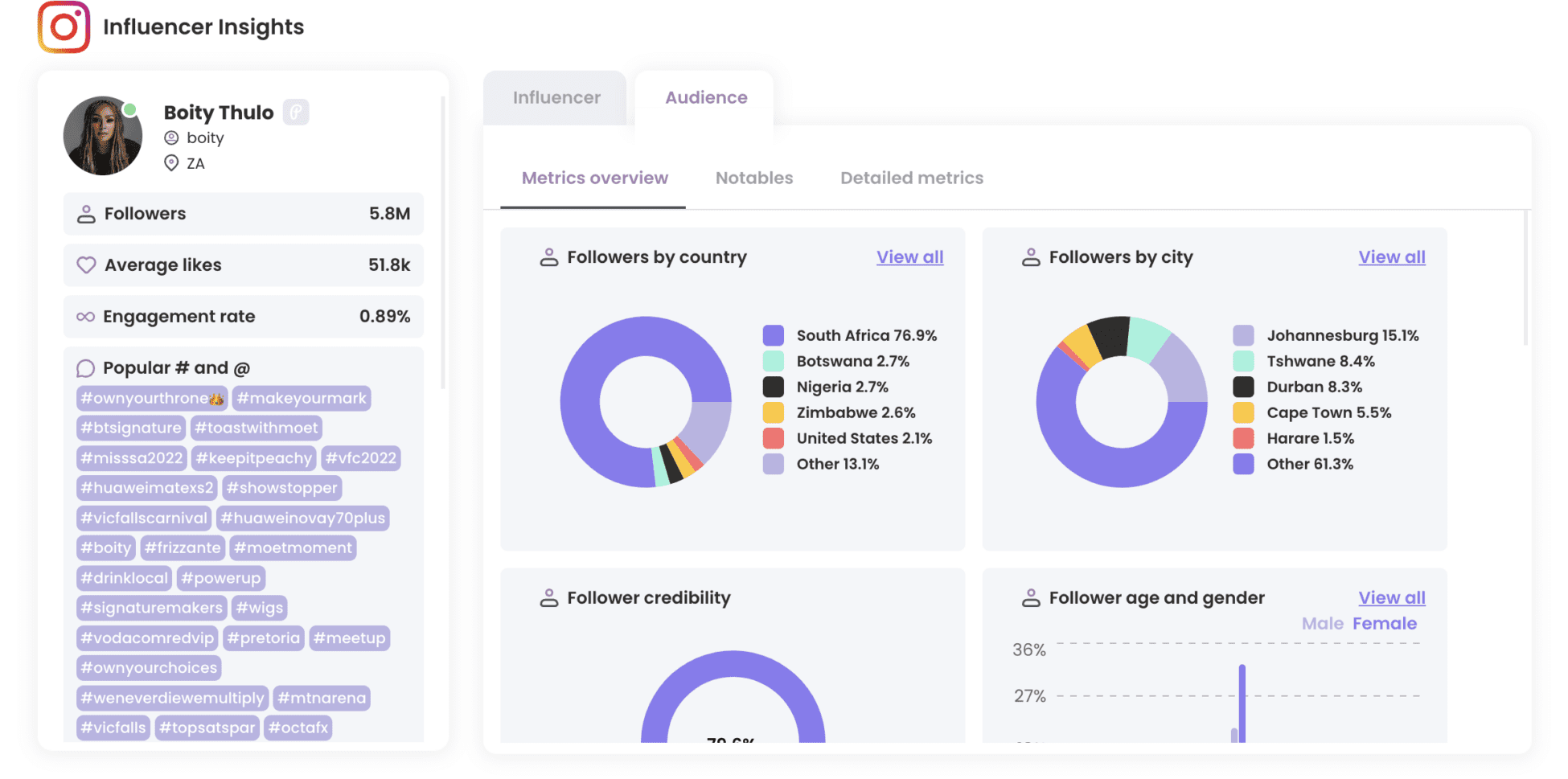
@boity’s influencer profile and target audience on Promoty’s influencer analytics tool
b) Measuring the impact on the brand image
One of the most popular goals in influencer marketing is building a brand: products used by influencers are often perceived as much more attractive and trendy.
If you’re trying to improve the brand image, build relationships with your customers, and build a community around your brands, focus on engagement-related social media metrics – such as comments, post saves, positive engagement, new Instagram followers, hashtag usage, influencer engagement, and influencer generated content.
Both brand awareness and brand image are quite difficult to measure, especially for the brands that don’t have huge budgets to invest in brand surveys. In this case, the brands don’t have any other way than to rely on social media data and customers’ feedback.
One of the biggest criticisms of influencer marketing is that measuring influencer marketing ROI might be difficult. That might be true in some cases : it’s difficult to track someone’s journey from scrolling their phone to walking to a physical store. That’s why e-commerce companies have a huge advantage here!
In general, there are 3 ways to measure sales from influencer collaborations:
1. giving influencers personal discount codes;
2. creating trackable URL-s, for example, with UTM tags;
3. using affiliate services where the affiliate links have been created for you.
1. Using trackable and affiliate links
In autumn 2021, Instagram launched story links for all the users – which means that all the influencers can now easily direct their followers to brands’ websites or online stores!
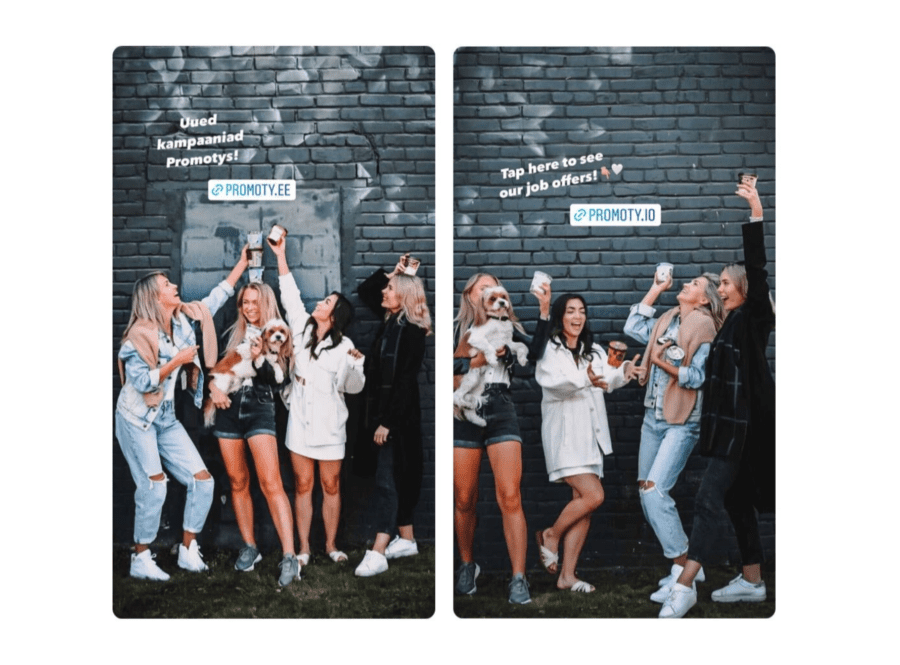
The easiest way to make your links trackable is UTM tags. It basically means adding certain keywords to a URL before sharing it – and as a result, you’ll see on Google Analytics exactly which collaborations brought you the most traffic and what was the quality of that traffic.
Fortunately, you don’t have to code anything here: you can use the UTM Tag Builder to easily create tagged URLs that help you see the results per every channel, marketing campaign, and collaboration in Google Analytics.
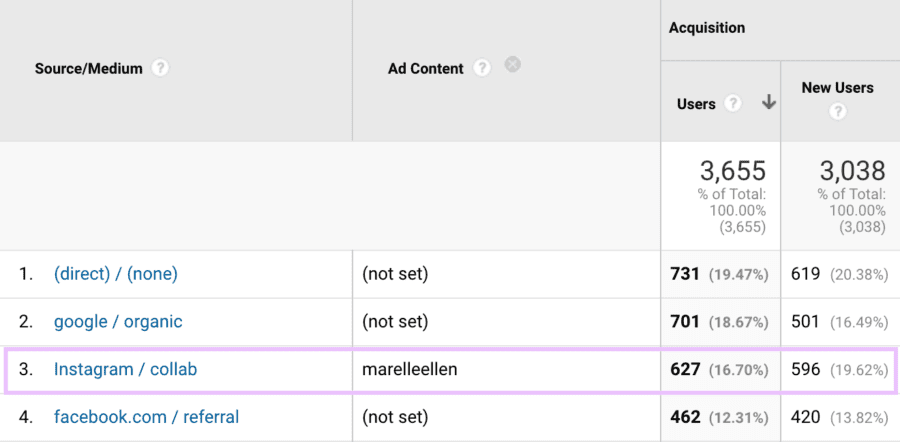
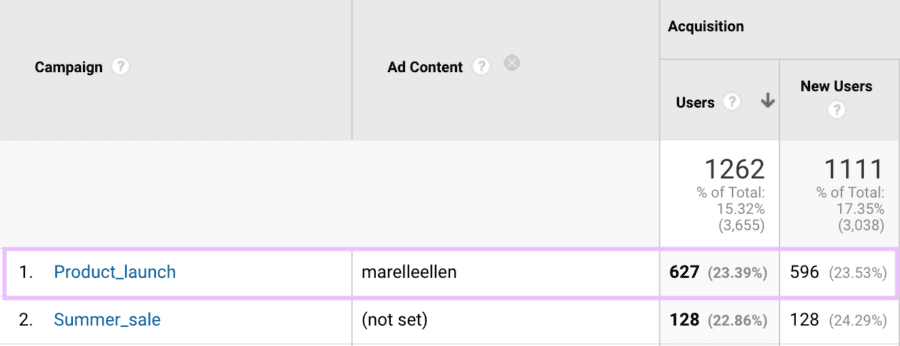
2. Using personal promo codes and coupon codes to measure ROI
If your e-commerce platform allows it, one of the easiest ways is to create a unique discount code for the influencer. The greater the discount you can offer – even in the short term – the more the influencers are motivated to share it! It’s a value for their followers, after all.
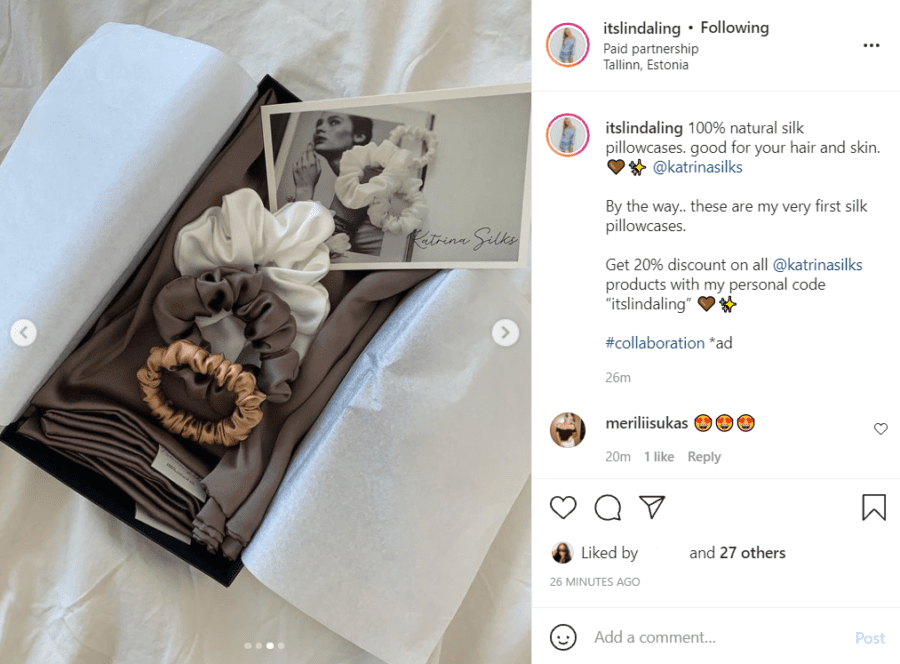
Linda Ling (@itslindaling) x Katrina Silks collaboration
On TikTok, many brands and influencers prefer using promo codes as there are no clickable links in TikTok videos. However, if you prefer trackable links or affiliate links, you can ask the influencer to add the link in the bio – just like in the good old times on Instagram. 🤍
In case you don’t have an online store, the impact of influencer marketing is much more difficult to measure. In that case, the brand has no other way to compare the sales results of the period with the influencer marketing campaign period to see if there is any correlation.
6 influencer marketing KPIs
To sum it up, here’s a list of 6 influencer marketing KPIs you need to measure:
1. Reach – how many people did see the collaboration post;
2. Engagement – likes, comments, and saves on the post;
3. New followers on the brands’ Instagram page;
4. Indirect metrics, such as website traffic or branded searches;
5. The number of leads, purchases, and revenue generated;
6. ROI – sales revenue compared to the marketing investment;
Optimizing your influencer marketing campaigns
When it comes to influencer marketing, long-term collaborations always work the best. Once you have found the first micro-influencers for your brand, you can start working with them. If you find more micro-influencers, you can add them to your influencer campaign!
According to the Pareto principle, 20% of the efforts bring 80% of the results. Of course, that also applies to influencer marketing campaigns! In other words, you can assume that 80% of the impact is created by 20% of the influencers you work with – that’s another reason why measuring influencers’ performance is so important.
Hence, your influencer marketing strategy should be optimized like this:
▸ Choose 10-20 different influencers per marketing campaign.
▸ When the campaign ends, choose 2-4 influencers (20%) who brought in the best results
▸ Turn these 2-4 influencers into brand ambassadors, and switch the remaining 80% into new micro-influencers. It’s like optimizing your PPC ads!
▸ Repeat the process all year round – just like you optimize any other digital marketing activity.
This way, you’ll build an army of micro-influencers who bring results to your brand 💪🏼
Organizing your influencers and influencer campaigns
Running influencer marketing campaigns on a scale is difficult to handle without a proper software. This has given the rise to IRMs – influencer relationship management tools – that allow companies to manage all their creators, and collaborations, and monitor branded content in one place.
Promoty is one of them: it’s an influencer management platform that allows you to add Instagram, TikTok, and Youtube creators, organize them by boards and columns, add notes and labels to every profile, and much more.
This way, you could save time on influencer marketing while building strong relationships with them. Here’s a short video on how it works! 👇🏼
